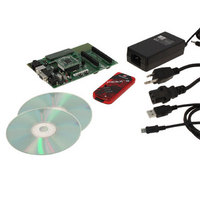DV164136 Microchip Technology, DV164136 Datasheet - Page 92

DV164136
Manufacturer Part Number
DV164136
Description
DEVELOPMENT KIT FOR PIC18
Manufacturer
Microchip Technology
Series
PIC®r
Type
MCUr
Datasheets
1.DM183032.pdf
(38 pages)
2.DV164136.pdf
(448 pages)
3.DV164136.pdf
(6 pages)
4.DV164136.pdf
(446 pages)
5.DV164136.pdf
(4 pages)
6.DV164136.pdf
(18 pages)
Specifications of DV164136
Contents
Board, Cables, CDs, PICkit™ 3 Programmer, Power Supply
Processor To Be Evaluated
PIC18F8722, PIC18F87J11
Interface Type
RS-232, USB
Operating Supply Voltage
3.3 V, 5 V
Silicon Manufacturer
Microchip
Core Architecture
PIC
Core Sub-architecture
PIC18
Silicon Core Number
PIC18F
Silicon Family Name
PIC18F8xxx
Kit Contents
PIC18 Exp Brd PICkit 3 Cable CD PSU
Lead Free Status / RoHS Status
Lead free / RoHS Compliant
For Use With/related Products
PIC18F8722, PIC18F87J11
Lead Free Status / Rohs Status
Lead free / RoHS Compliant
Available stocks
Company
Part Number
Manufacturer
Quantity
Price
Company:
Part Number:
DV164136
Manufacturer:
MICROCHIP
Quantity:
12 000
- DM183032 PDF datasheet
- DV164136 PDF datasheet #2
- DV164136 PDF datasheet #3
- DV164136 PDF datasheet #4
- DV164136 PDF datasheet #5
- DV164136 PDF datasheet #6
- Current page: 92 of 448
- Download datasheet (8Mb)
PIC18F87J11 FAMILY
6.2.2
The Table Latch (TABLAT) is an 8-bit register mapped
into the SFR space. The Table Latch register is used to
hold 8-bit data during data transfers between program
memory and data RAM.
6.2.3
The Table Pointer (TBLPTR) register addresses a byte
within the program memory. The TBLPTR is comprised
of three SFR registers: Table Pointer Upper Byte, Table
Pointer High Byte and Table Pointer Low Byte
(TBLPTRU:TBLPTRH:TBLPTRL). These three regis-
ters join to form a 22-bit wide pointer. The low-order
21 bits allow the device to address up to 2 Mbytes of
program memory space. The 22nd bit allows access to
the device ID, the user ID and the Configuration bits.
The Table Pointer register, TBLPTR, is used by the
TBLRD and TBLWT instructions. These instructions can
update the TBLPTR in one of four ways based on the
table operation. These operations are shown in
Table 6-1. These operations on the TBLPTR only affect
the low-order 21 bits.
TABLE 6-1:
FIGURE 6-3:
DS39778D-page 92
TBLRD*
TBLWT*
TBLRD*+
TBLWT*+
TBLRD*-
TBLWT*-
TBLRD+*
TBLWT+*
Example
21
TABLE LATCH REGISTER (TABLAT)
TABLE POINTER REGISTER
(TBLPTR)
TABLE POINTER OPERATIONS WITH TBLRD AND TBLWT INSTRUCTIONS
TBLPTRU
TABLE POINTER BOUNDARIES BASED ON OPERATION
ERASE: TBLPTR<20:10>
16
15
TABLE WRITE: TBLPTR<20:6>
TBLPTR is incremented before the read/write
TBLPTR is decremented after the read/write
TBLPTR is incremented after the read/write
TABLE READ: TBLPTR<21:0>
TBLPTRH
Operation on Table Pointer
TBLPTR is not modified
6.2.4
TBLPTR is used in reads, writes and erases of the
Flash program memory.
When a TBLRD is executed, all 22 bits of the TBLPTR
determine which byte is read from program memory
into TABLAT.
When a TBLWT is executed, the seven LSbs of the
Table Pointer register (TBLPTR<6:0>) determine which
of the 64 program memory holding registers is written
to. When the timed write to program memory begins
(via the WR bit), the 12 MSbs of the TBLPTR
(TBLPTR<21:10>) determine which program memory
block of 1024 bytes is written to. For more detail, see
Section 6.5 “Writing to Flash Program Memory”.
When an erase of program memory is executed, the
12 MSbs of the Table Pointer register point to the
1024-byte block that will be erased. The Least
Significant bits are ignored.
Figure 6-3 describes the relevant boundaries of
TBLPTR based on Flash program memory operations.
8
7
TABLE POINTER BOUNDARIES
TBLPTRL
© 2009 Microchip Technology Inc.
0
Related parts for DV164136
Image
Part Number
Description
Manufacturer
Datasheet
Request
R

Part Number:
Description:
Manufacturer:
Microchip Technology Inc.
Datasheet:

Part Number:
Description:
Manufacturer:
Microchip Technology Inc.
Datasheet:

Part Number:
Description:
Manufacturer:
Microchip Technology Inc.
Datasheet:

Part Number:
Description:
Manufacturer:
Microchip Technology Inc.
Datasheet:

Part Number:
Description:
Manufacturer:
Microchip Technology Inc.
Datasheet:

Part Number:
Description:
Manufacturer:
Microchip Technology Inc.
Datasheet:

Part Number:
Description:
Manufacturer:
Microchip Technology Inc.
Datasheet:

Part Number:
Description:
Manufacturer:
Microchip Technology Inc.
Datasheet:











